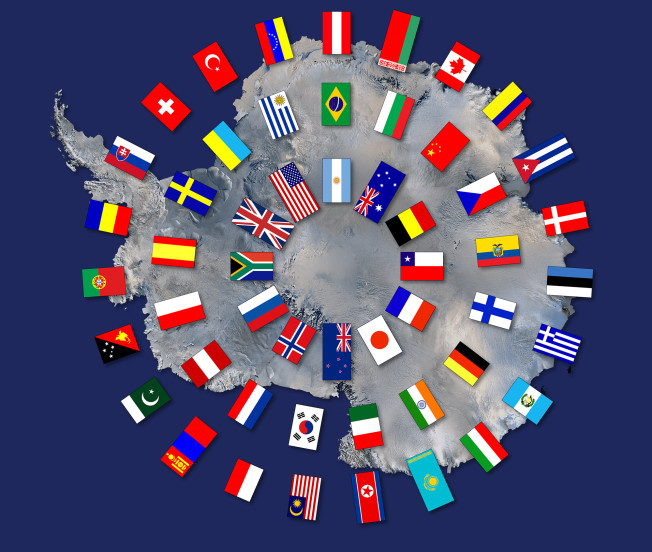
Antarctica – a role model for international co-operation
Although expeditions to Antarctica often looked at the possibilities for resource exploitation, science was always a focus, even in the very early days.
And it is amazing to think that at the height of the cold war, humans could get together and decide to co-operate, under the banner of science, in spite of our cultural and ideological differences.
This year (2019) marks 60 years since the signing of the Antarctic Treaty, when 12 countries decided how Antarctica was to be managed.
The 12 original signatory nations were Argentina, Australia, Belgium, Chile, France, Japan, New Zealand, Norway, South Africa, the United Kingdom, the United States of America and the Soviet Union.
They managed to put aside political differences to agree on a common cause. At the same time though, nations, being how they are, were also using Antarctica to advance their global political standing. According to Dr Alessandro Antonello, a Research Fellow in the School of Historical and Philosophical Studies at the University of Melbourne:
“In their search for order and stability, power and authority, the Antarctic Treaty states and their scientists, instead of strictly maintaining their original and limited political agreement to manage their territorial disagreements, found opportunities to advance their own position,” he says.
As more and more players signed the Treaty and became involved in Antarctica the bases that they set up became evidence of each individual government’s global influence.
It was some decades after the Treaty was signed that, in response to a growing ecological awareness, a further set of international treaties and agreements was negotiated to ensure the conservation and protection of the Antarctic environment.
Today, there are 54 parties to the Treaty and about 30 of these countries run bases in Antarctica. Since a number of countries have more than one base there are around 45 year-round stations and 30 summer field stations.
Currently there are questions around whether some countries have been setting up bases and naming features in Antarctica as a way of positioning themselves for a future territorial grab, if they are able to influence the renegotiation of the mining ban when it comes up for possible negotiation in 2048.
The mining ban is of indefinite duration beyond 2048, and strict rules for
modifying the ban are provided by the Madrid Protocol. If all members
agree, the prohibition can be modified at any time but that is highly unlikely to happen.
However, there is no binding enforcement mechanism for those who choose to violate the Protocol which includes mining, but I suspect there would be a strong response from other Treaty nations and the world’s population in the present day.
The larger issue is that after 2048 a country could set a geopolitical precedent and undertake commercial mining regardless of it’s practicality or economic feasibility because of the ‘Rule of capture’ which is a general rule that the first person to “capture” a particular resource owns that resource.
Russia and China are setting up their own GPS systems which require ground stations in Antarctica. Since GPS can be used in time of war there is some question over whether the Chinese and Russian activities are military in nature, which would be a contravention of the Antarctic Treaty, but the situation is murky
Right now though the various nations involved in Antarctica continue to co-operate in the pursuit of science so it gives me hope for the future.
This video has some interesting info on the early days of scientific co-operation.

